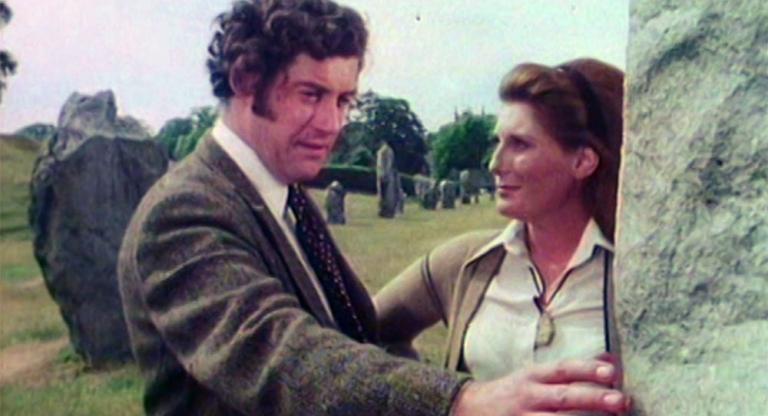Gesturing crudely, one hand busy either with a can of Schlitz or a cigarette, Beatrice Hunsdorfer has a blunt manner and a wistful outlook. A widow with two teenage daughters—Ruth, an epileptic cheerleader, and Matilda, a quiet one with an eye for science projects—Beatrice is full of intentions: to clean up her cluttered home, to open an elegant tea shop, to charm the world with her cheesecake recipe. Best she can manage is to just get by, taking in boarders who are all on the brink of death.
This is the odd world of The Effect of Gamma Rays on Man-in-Moon Marigolds (1972), the third in a handful of films Paul Newman directed; the second to star his wife Joanne Woodward. Based on a stage play by Paul Zindel, it has the florid language of the theater but manages to avoid the woodenness into which many adaptations fall. Woodward embodies Beatrice with the necessary absence of grace without losing empathy for the flawed woman.
Not much happens over the course of the story—we’re catching the family in a span of days that has probably repeated itself throughout the daughters’ lives. They’re not shocked when Beatrice doesn’t come home one night after going on a bender, smashing up a guy’s antique shop, and passing out in her car. Matilda stays home from school long enough to make sure she turns up. Ruth entertains her drama class by doing an impersonation of her mother: they laugh, she plays into it but there are tears in her eyes. Their latest lodger is Nanny, an ancient one whose face sinks into its toothless mouth, which no words ever escape.
Beatrice’s brand of mothering includes giving Ruth a drag on her cigarette after she recovers from a seizure and admonishing Matilda over her kindredship with her science teacher. Growing marigolds to compete in a school science fair, Matilda tries to keep out of the way, even as her rabbit litters the place with droppings. Dowdy in a house robe most of the time, Beatrice shows hints of once having had potential, but evidently she was always looked upon as too eccentric. Classmates called her “Betty the Loon,” thought she was “funny.” When she does dress up she overdoes it, draped in head-to-toe sparkle for the science fair.
The source material being a stage play and the film being a 1970s production, a certain dourness is expected, but there’s something lived-in about these characters. It is easy to believe you’re dipping into their lives at a moment that is rather mundane for them, and that they’ll continue on after you stop looking.
The Effect of Gamma Rays on Man-in-Moon Marigolds is available to watch as a decent bootleg on YouTube or, even better, on Blu-ray from Twilight Time.
Cristina Cacioppo's column The Outskirts is now a series at Nitehawk. Fun screens on 35mm Thursday, January 27 at Nitehawk Prospect Park.






